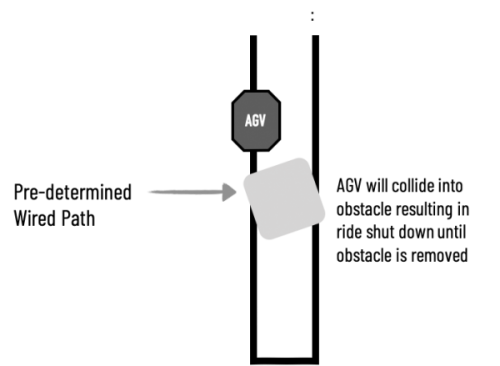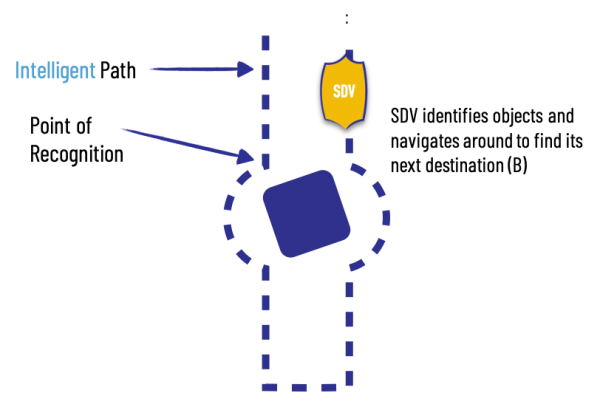Do you remember the cartoon program The Jetson’s© where everything in the show was placed in an unreachable future of robots, automation, and flying cars? Fast forward to today and it seems as though there is new technology announced daily.
Well, in the amusement industry, robots and autonomous systems are making people safer, reducing wait times, creating experiences that were previously impossible, and much more. Robots and autonomous systems are assisting in creating more efficient and more immersive experiences in the amusement industry.
In pop culture, there are many autonomous devices that are surprisingly relevant for the amusement industry, such as Autonomous Vehicles, Artificial Intelligence, Robot Arms, Machine Learning and Facial recognition. While each of these topics is worthy of its own post, we will focus on the safety aspects of the first two: Autonomous Vehicles and Artificial Intelligence.
Safety for autonomous vehicles
When you hear “autonomous” you probably think of self-driving vehicles, and that will be our starting point.
There are a few different types of autonomous vehicles, such as SDV (self-driving vehicle), AGV (automated guided vehicle), UAV (unmanned aerial vehicle) and UGV (unmanned ground vehicle). We are going to look at SDV’s and AGV’s as they are more applicable to the amusement industry.
Automated Guided Vehicles (AGV)
AGV’s are computer-controlled machines (typically on wheels) that can perform a set of defined tasks by following specific instructions with minimal or no human intervention; they have autonomy. There are many different types of AGV’s that exist as they are becoming more and more popular within the amusement industry. Some use embedded wires, wheel encoders, magnetic tape or other Local Positioning Systems (LPS) to follow a pre-defined path. These types of autonomous vehicles are the most common for trackless dark ride vehicles.
Self-Driving Vehicles (SDV)
A new advanced player in the trackless ride vehicle field, the self-driving vehicle, is a little different. CAVU’s SDV is a perfect embodiment of this technology. CAVU’s SDV uses a combination of LIDAR (like radar, but using light) and LPS to navigate through a space. This means no wires or external infrastructure is used for navigation. SDV’s create a map of a space and calculate, in real time, the most efficient path from A to B.
Both AGV’s and SDV’s have safety benefits over traditional tracked vehicles. They have pre-programmed limitations that keep them from running into any walls or other vehicles. They use similar software/hardware limitations to safely manage speeds, positions, and much more. Both vehicles are constantly monitored by the Master Ride Control System (Master RCS) to ensure they are at the right position at the right time. As a final measure, most autonomous vehicles can be remotely or manually taken over by the operator if any issues should arise.
Taking safety one step further, SDV’s (such as CAVU’s) have some additional features that differentiate them from AGV’s. If an unexpected obstacle appears, the SDV identifies the obstacle, calculates an alternate path, and safely navigates around, as shown below.


In cases of unexpected fallen equipment, rogue passengers, or other hazards, the SDV can automatically detect the hazard and stop safely. SDV’s can be used for more than amusement attraction vehicles: they can be used for guided tours, moving show action equipment, and much more. SDV’s can even safely navigate through crowds of guests, constantly keeping track of all the obstacles and navigating safely through.
Autonomous vehicles, though they may seem like a closer step to the War of the Worlds© scenario, actually add many safety measures that make them even safer than traditional vehicles. The added intelligence of an autonomous vehicle expands the uses for trackless vehicles and allows for a safe ride.
Artificial Intelligence
One of the most popular topics in autonomy is Artificial Intelligence or AI. This is one of the most intimidating innovations in robotics and automation. Like The Jetsons© or iRobot©, AI has a futuristic, unknown, and sometimes intimidating quality to it.
While the amusement industry has seen its share of AI over the years, humanoid AI is only now making its way into parks and attractions. To better understand how these system’s need to be designed safely, we’ll take a closer look at DreamCraft’s Project EVE: a real-time, interactive, digital human.
Media characters on attractions have traditionally been presented through linear and non-responsive media formats. Using real-time technology, DreamCraft brings characters to life and provides interactive and responsive characterizations. DreamCraft is working on a prototype of Project EVE that can be aware of guests, watch and track guests, and understand the context of their actions. Project EVE is a perfect example of the advances in AI and digital human technology that has just started to become available for the amusement industry.
While it may seem intimidating, there are many safety benefits of using digital humans and/or AI:
- Potentially removes the need for certain operators and increases consistency in delivery of guest instruction;
- Work to improve social distancing and other hygienic concerns through external monitoring and response; and
- Provide additional guest guidance in emergency/evacuation situations by detecting and instructing guest flow.
While many books and films have been created to instil a fear of robots/AI, there are many benefits from both a safety and efficiency aspect to using autonomy in theme parks. As technology develops, so will these benefits, allowing us to become further immersed in the experiences.
